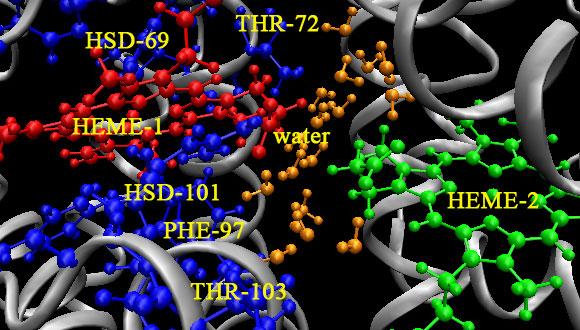Physical Chemistry Seminar: Production of Spin and Orbitally Polarized Atomic Photofragments and Femtosecond Stereodynamics in Biological Molecules
Prof. Oleg Vasyutinskii, Ioffe Institute, St.-Petersburg, Russia
Abstract:
The talk reviews our recent experimental and theoretical studies on the application of several novel polarization-sensitive laser methods for investigation of vector correlations in nano- and femtosecond photodynamics of small molecules: HCl, CH3I and O3 in the gas phase and biological coenzymes NADH in solutions. The main results obtained are as follows:
A novel effective method has been developed for detection of spin-polarized hydrogen (SPH) atoms produced in photolysis of two- and polyatomic molecules in the gas phase. The method is based on the quantum mechanical theory and was proved experimentally by utilizing multiphoton Rydberg time-of-flight / ion imaging at SPH atoms produced in photolysis of HCl with circularly and linearly polarized laser pulses. The importance of this result is that the methods developed can be used as a new approach for investigation of any photochemical reaction resulting of hydrogen atoms production.
Experimental and theoretical studies of time-dependent photodissociation of ozone and CH3I under excitation with polarized laser pulses in the supersonic molecular beam have been carried out. Spatial orbital orientation and alignment distributions of atomic and molecular photofragments produced were recorded using the ion imaging slicing technique. The results obtained have been interpreted by means of quantum mechanical models developed that provided important information on the photolysis mechanisms.
A novel polarization-modulation transient monitoring method has been developed for investigation of excited state dynamics of polyatomic molecules with sub-picosecond temporal resolution and with unprecedently low sub-nanojoule laser pulse energy. The method was applied for the study of biological coenzymes NADH in water-alcohol solutions and resulted in the observation of picosecond excited state relaxation that was associated with the rearrangement of equilibrium nuclear configuration of the molecules after excitation by a femtosecond laser pulse. The same experimental method led to observation of polarization-sensitive stimulated Raman scattering that was studied theoretically and shown to be perspective for intracell cell microscopy.
Seminar Organizer: Dr. Guy Cohen


